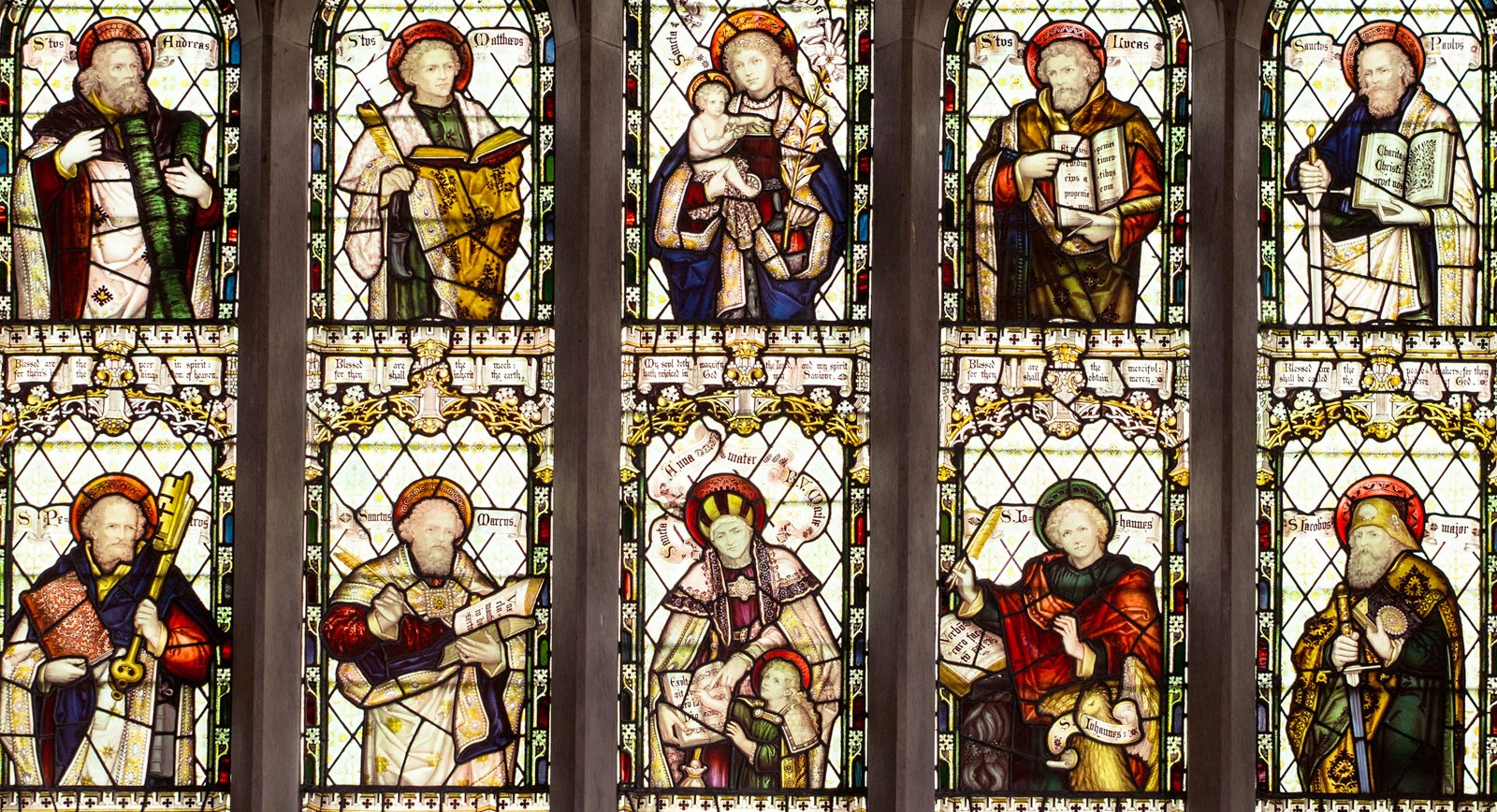Last Updated on January 29, 2025 by Avia
I typically don’t address subjects of organized religion. That’s kind of a hyper-charged subject and everybody has their own views about faith-philosophies. That said, I’ve been revamping many of my Valentine’s Day articles on this website. While I was going through the various pages I’ve written about love symbols and Valentine’s Day – it only seemed right to talk about the saint who is still remembered today on February 14th. So who is this guy? Read further about these interesting facts about St. Valentine.
Table of Contents
- Background Story About St. Valentine
- About St. Valentine: His Life and Legacy
- Why is St. Valentine the Saint of Love?
- Interesting Facts About St. Valentine
- How did Saint Valentine Become a Saint?
- Why is Saint Valentine Associated with Valentine’s Day?
- What Are Saint Valentine’s Symbols?
- What is Saint Valentine the Patron Saint of?
- What Symbolism Does St. Valentine Stand for?
- How is Saint Valentine Connected to Valentine’s Day Notes and Cards?
- Was Saint Valentine Considered a Healer?
- Saint Valentine’s Skull is on Display
- Other Frequently Asked Questions About St. Valentine
- Concluding Thoughts About St. Valentine
Background Story About St. Valentine
The origins of Valentine’s day are sketchy at best. February 14th is commonly associated with a goodly saint or priest by the moniker of Valentine who rebels against tyranny for the sake of love.
One such account is about one certain Saint Valentine, who was a Roman priest during the reign of Emperor Claudius the 2nd.
Claudius had an ass-hat stance on young men marrying because he thought these men would be compelled to stay home rather than fight in the Roman army. Claudius even decreed that no young man should be married before first serving the Roman Empire as a soldier.
St. Valentine, however, was a lover, not a fighter. He secretly went behind Claudius’ back and privately married a number of young couples. Regrettably, Valentine got caught for defying Claudius. He was arrested, put to prison, and sentenced to death.
Valentine was executed on February 14th for bringing loving couples together in matrimony. That means..regardless of the consequences. Valentine chose love over death. If that’s not a true martyr, rebel, and activist…I’m not sure what is.
Another tidbit is that while in prison, Valentine formed a tender friendship with the jailer’s blind daughter. There are stories that Valentine submitted a letter of kind affection to this young woman on the day of his execution. He signed it “From your Valentine.”
To this day, the ending signatures such as “From your valentine” -or- “Be my Valentine” is a testimony to the inspiring affection St. Valentine had for the blind daughter of his own jailer.
Can you imagine that? This is a man who was going to be beheaded for living up to the hope and promise of love….and he continued to dare to love even while he was facing his own death.
I don’t know about you, but that’s a titanic testimony for love IMHO.
To dare to care, bear one’s heart, be vulnerable and committed to the whole concept of love…it just proves the point (if the legends are true) that St. Valentine was a crackerjack poster boy for deserving this one day to celebrate the generosity of compassion, care, kindness, and love.

About St. Valentine: His Life and Legacy
Very little is known about the life of St. Valentine. What we do know comes from legends and stories, many of which are unconfirmed. According to one legend, Valentine was a Roman priest who was martyred during the reign of Emperor Claudius II. At the time, Claudius had banned marriage because he believed that single men made better soldiers than those with wives and families. But Valentine continued to perform marriages in secret. When Claudius found out, he had Valentine arrested and thrown into jail.
While in jail, Valentine fell in love with the jailer’s daughter. On the day of his execution, he sent her a letter signed “Your Valentine” as a farewell. This is perhaps the most popular legend associated with St. Valentine and the origin of our custom of exchanging Valentines on February 14th.
Other stories claim that Valentine was a bishop who was martyred by being stoned or beheaded. Yet another legend says that he was put to death for helping Christians escape from Roman prisons, where they were often tortured and killed.
No matter which story is true, it is clear that St. Valentine lived a life of courage and defiance in the face of persecution by standing up for what he believed in: love and marriage. In honor of his legacy, we continue to celebrate him every year on February 14th.
Why is St. Valentine the Saint of Love?
St. Valentine is the patron saint of lovers because he was a Roman priest who defied the emperor’s orders and continued to marry couples even though it was against the law. He was eventually arrested and put to death, but his legacy of love endures. Couples all over the world celebrate their love for each other on Valentine’s Day in his honor.
Interesting Facts About St. Valentine
Valentine’s Day is celebrated every year on February 14th. It is a day to celebrate love and affection. Many people believe that the holiday has Christian origins, but the holiday actually has pagan roots. The holiday was originally created to celebrate the Roman god Lupercus, who was the god of fertility. The festival of Lupercalia is held every year on February 15th. The holiday eventually morphed into a day to celebrate love and romance, and it became associated with St. Valentine, a Christian martyr who was killed on February 14th. Here are a few more facts about St. Valentine that might pique your interest…
How did Saint Valentine Become a Saint?
Saint Valentine is the patron saint of love, marriage, and happy endings. But how did he become a saint?
Valentine was a 3rd-century Roman priest who was martyred for his faith. According to legend, he was imprisoned for performing weddings for Christian couples who were not allowed to marry under Roman law.
While the process of canonization (the steps to becoming a saint) for Valentine might look different today than it did back on his death in 269 AD it’s largely accepted that Valentine was subjected to some sort of canonization process.
Not only did St. Valentine die on February 14th, but he was also martyred (made a saint) by the church of Rome on the same day. Hence, St. Valentine is eternally linked to this day in February.
Why is Saint Valentine Associated with Valentine’s Day?
Valentine’s Day is a holiday that is celebrated on February 14th. It is a day to celebrate love and affection. Many people believe that the holiday is named after Saint Valentine, but there is actually no hard-core evidence to support this claim.
The first recorded association of Valentine’s Day with romantic love dates back to the 14th century, when it was believed that the middle of February was the time when birds began to mate. This may be why some people think that Saint Valentine was a bird-keeper. However, there are many other theories about the origin of the holiday and its name.
One theory suggests that the holiday is named after a Roman fertility goddess named Valentia. Another theory claims that it was originally a pagan holiday that was later Christianized. Regardless of its origins, Saint Valentine has become associated with this holiday – as we’ll explore together moving forward.
What Are Saint Valentine’s Symbols?
There are quite a few symbols associated with Saint Valentine. Saint Valentine is typically pictured in red clothes. Red, in Roman Catholic wisdom, is symbolic of blood, which is associated with martyrdom. Valentine’s most distinguishing symbol is a palm branch. Palms are symbolic of peace, hope, love, and harmony. Then again, he’s also been depicted as wearing the clerics of a bishop. Some of Doves or lovebirds have also been connected with this saint. These birds are also symbolic of peace, love, and affinity.
What is Saint Valentine the Patron Saint of?
Saint Valentine is the patron saint of many things, including:
- Love and affection
- Happy marriages
- People who are in love
- Victims of love (the brokenhearted)
- Couples, lovers, best friends
What Symbolism Does St. Valentine Stand for?
We’ve talked a lot about St. Valentine as a saint, a man with a mission, as well as a man in love. Through his life and his death, we can gather certain symbolic themes. When a human becomes a legend, they can indeed represent big symbolic concepts. Here are a few symbolic attributes that St. Valentine represents.
- Faith
- Virtue
- Courage
- Kindness
- Tolerance
- Community
- Beneficence
- Forgiveness
- Unprejudiced
How is Saint Valentine Connected to Valentine’s Day Notes and Cards?

As we’ve discussed, Saint Valentine was a Christian priest who lived in Rome during the third century. He was arrested and imprisoned for performing weddings for soldiers who were forbidden to marry by the emperor.
While he was in jail, Saint Valentine fell in love with the jailor’s daughter and is said to have written her a letter signed “From your Valentine.” It’s largely believed that this one note sparked the beginning of sending valentine’s (cards and love notes) on Valentine’s Day.
You might also say that love notes on February 14th are called Valentine’s as a way to honor the namesake of the day. People all over the world exchange cards and letters on Valentine’s Day in honor of Saint Valentine. So next time you send a card to your sweetheart, remember the story of the brave saint who defied an emperor and showed us that love always prevails.
The tradition of exchanging valentines started really taking off in the 1700s. At that time, it was mostly women who exchanged handwritten notes. The custom eventually caught on with men as well, and by the 19th century, printed cards began to replace handwritten ones. Today, we continue to exchange valentines with our loved ones as a way to express our affection for them.
Was Saint Valentine Considered a Healer?
Yes, Saint Valentine was considered a healer. He was known for his ability to heal the sick and injured. He was also known for his ability to help people in need.
There is an account in history that states St. Valentine healed the blind. The story goes that a judge in Italy named Asterius talked often to St. Valentine about his case while the saint was incarcerated. Asterius was impressed with Valentine’s wisdom, and devotion to his faith.
So, one day Asterius brought his daughter to Valentine’s cell and asked Valentine to give her the gift of sight. Valentine prayed fervently and placed his hands gently on the girl’s eyes. The legend concludes that the girl’s site was restored. This and other similar stories have contributed to the facts about St. Valentine being a healer.
Saint Valentine’s Skull is on Display
Saint Valentine’s skull is on display at the church of Santa Maria in Cosmedin in Rome. The skull is encased in a glass reliquary and is visible to visitors. According to History.com, the body of the saint was buried in a cemetery in Terni, Italy. It was a quick and tactless burial – without a marker or any ceremony. This is largely due to the fact that the Diocese of Terni didn’t want Valentine’s disciples to get ahold of his remains.
It wasn’t until the 19th century that Valentine’s remains were discovered during an excavation of a catacomb near Rome. Examination of a certain set of bones showed conclusive evidence that these particular remains found in the catacomb belonged to St. Valentine.
It sounds kinda creepy and macabre, but it’s a Catholic tradition to disseminate the body bits of saints to different reliquaries across the world. These saintly bits might be hair, nails, or pieces of skin – they’re called “relics” and are considered to be items of great spiritual power.
At any rate, what is believed to be St. Valentine’s skull found its final resting place in the Basilica of Santa Maria. The skull is embellished with a crown of bright flowers – belying the unsettling, hollow gaze of Valentine’s skeletal sockets. The skull today is held on display for devotees, disciples, tourists, or oddly curious to see.
Other Frequently Asked Questions About St. Valentine
St. Valentine was a Christian martyr who was killed in Rome on February 14th, around 269 AD. Not much is known about his life, but it is believed that he was a priest who married couples in secret, against the orders of the emperor Claudius II.
The first recorded celebration of Valentine’s Day took place in 496 AD, when Pope Gelasius I declared February 14th to be a feast day in honor of St. Valentine. The holiday eventually spread to other parts of Europe and became associated with exchanging love notes and gifts.
One popular theory is that during the Middle Ages, young people would choose partners by drawing names from a bowl on February 14th. This may have been the origin of the tradition of sending anonymous “valentines.” Another possibility is that the holiday became associated with romance due to Shakespeare’s play Romeo and Juliet, which features a famous scene set on Valentine’s Day.
Concluding Thoughts About St. Valentine
Well, I hope I covered enough territory to inspire you to re-connect with this saint. While some facts about St. Valentine might not be as concrete as others, one thing we know for sure – this dude held up to his principles. He also exhibited a behemoth level of love in terms of clinging to spiritual guidance and his beliefs. However you feel about the saints, or Valentine’s day or sacred symbols – it never hurts to read an account such as Valentine’s. At the very least, I hope this article has inspired you and piqued your interest. As always, thanks for reading!
Mighty brightly,

© Copyrighted. All Rights Reserved.
Want more? Me too! That’s why I’ve also got this for you on Whats-Your-Sign:












